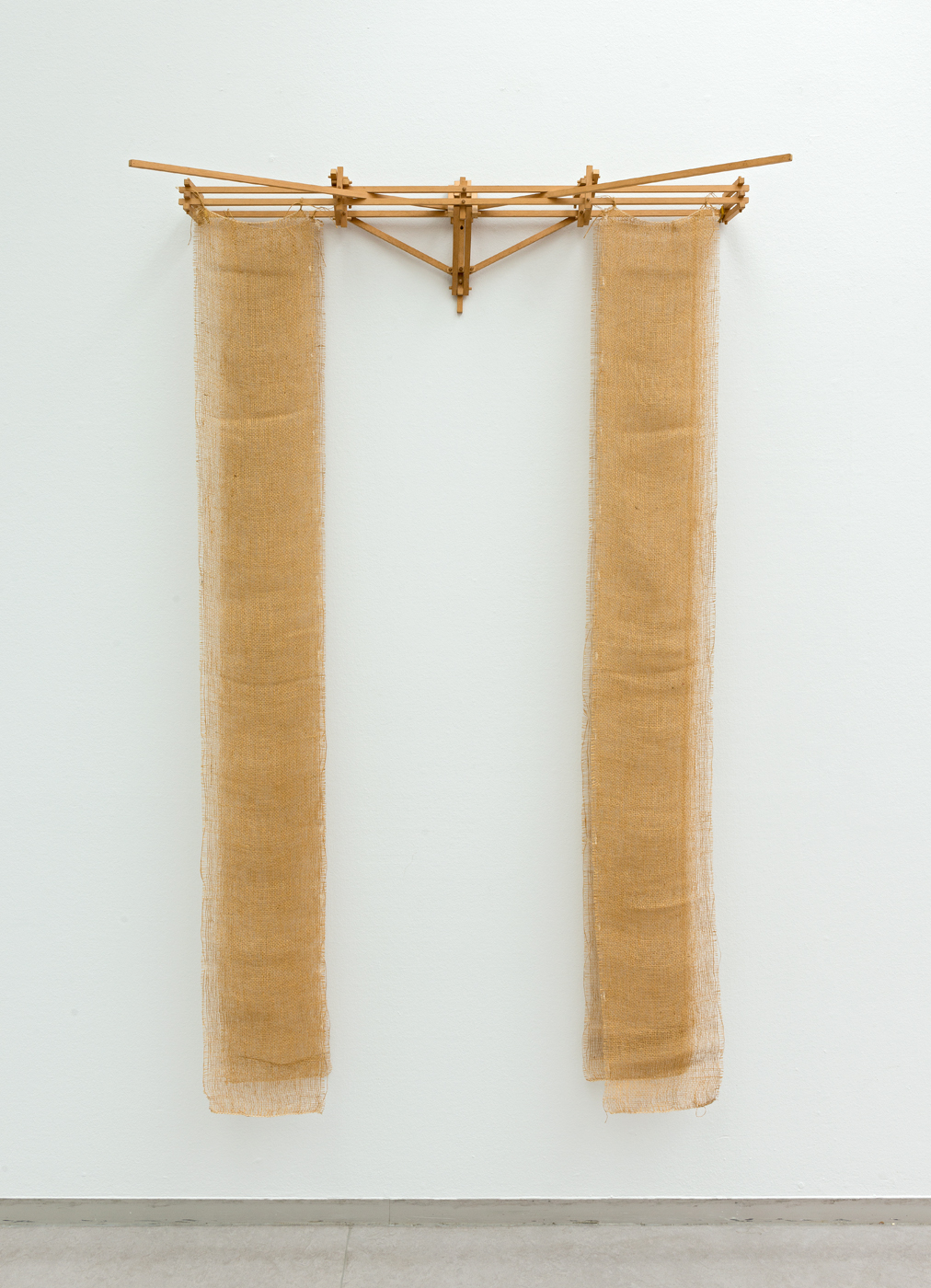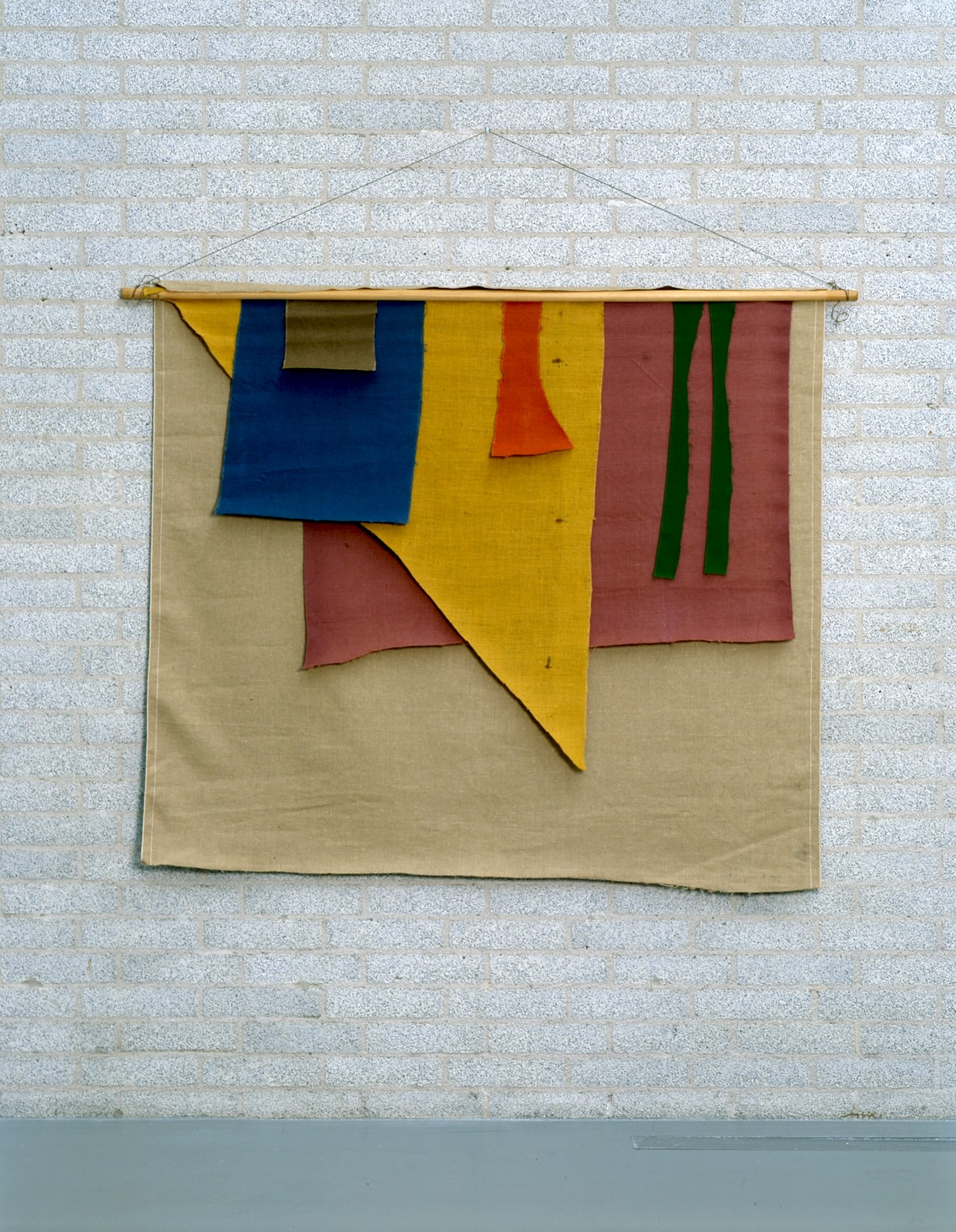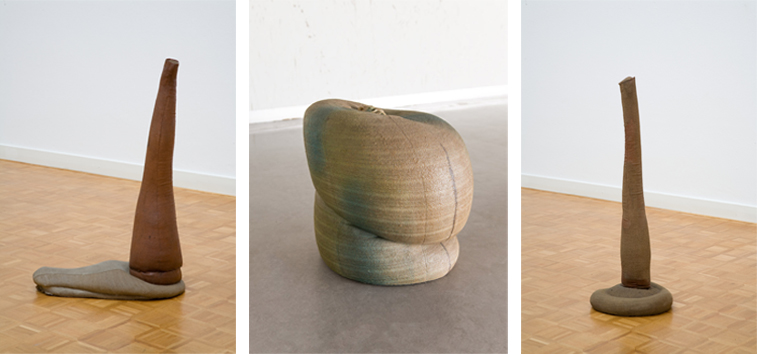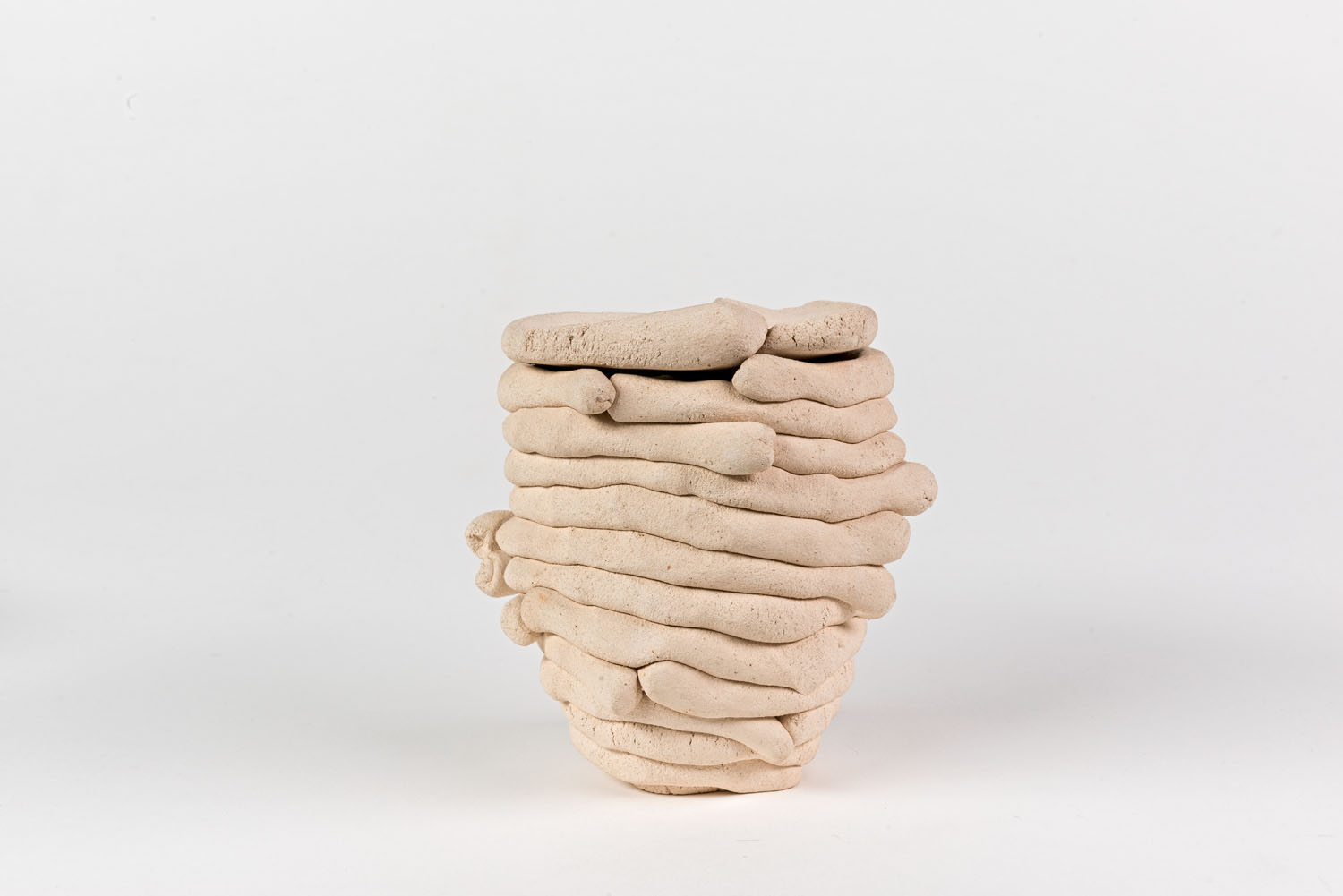 Light and shadow
Light and shadow
Shadow catchers hangs on the wall and consists of nothing more than a few thin pieces of wood and some strips of burlap. Both materials are used in their ‘pure’ state and do what they are ‘naturally’ suitable for. Wood can function as a support, burlap is flexible, it can be hung and also repel or diminish light. With the poetic title Shadow catchers – Flanagan is a great lover of free poetry – he makes clear what this work is about: his research into the infinite possibilities of light and shadow.
 A snapshot
A snapshot
In May 2, Flanagan examines the boundary between the two- and three-dimensional. By firmly clamping the pieces of hessian together at the top, he makes the work as flat as possible. But then the fabric is free to hang and fall where it will. The different pieces of hessian are coloured and assembled into a composition of colour and surfaces, as in a painting. This is reinforced by the bar at the top of the work, the string by which it hangs on the wall and the evocative title May 2. But the freedom that the material has, the possibility to shrink or curl up, makes the work what it is: a snapshot from the ongoing research of a sculptor. Perhaps a snapshot of the outcome on 2 May 1976.
 Directed coincidence
Directed coincidence
The Plants, sturdy tubers from which a tapered stem grows, seem to emerge from the ground spontaneously. They are the product of Flanagan’s interest in ‘malleable’ materials. With a sewing machine he makes fabric forms, which he fills with sand or plaster. Then he observes how the combined materials take on a different form and find a ‘natural’ balance. Coincidence plays a role in this, but it is also consciously directed by Flanagan.
 Inspiration from craftmanship
Inspiration from craftmanship
The Coil pots are just what their name suggests: hand-formed, long clay sausages that are rolled up into a pot. The serial number and weight indication of each pot are an extra reference to the object itself, the production process and the material. From the outset, Flanagan has avoided the ‘official’ sculptural materials and prefers to draw inspiration from the craftsmanship of the artisan. For the Coil pots he gathers knowledge in the use of clay bole, gesso (a type of plaster) and of the relevant medieval recipe. But he also uses these old materials and techniques in his own, unconventional way.
Gallery Art & Project
Barry Flanagan was long associated with the prestigious gallery Art & Project (1968-2001). In 2013 Adriaan van Ravesteijn (1938-2015), former gallerist of Art & Project, donated over two hundred works of art to the Kröller-Müller Museum. The works in this presentation are from that donation and from the collection of the Kröller-Müller Museum.
